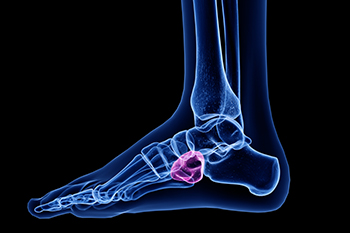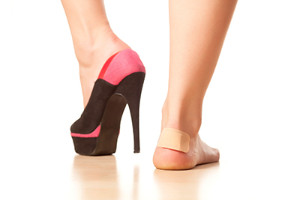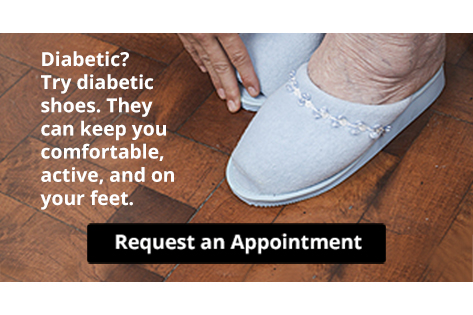Items filtered by date: August 2021
It's Time for Beautiful Feet
Is My Ingrown Toenail Infected?
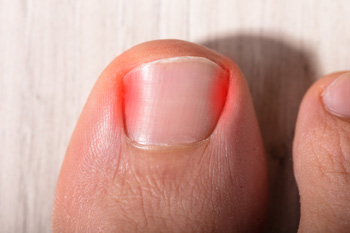 Ingrown toenails occur when a toenail grows into the surrounding skin instead of over it. While many cases of ingrown toenails can be resolved without complications, it is important to stay on the lookout for any signs of infection. These may include reddening or hardening of the skin surrounding the ingrown nail, swelling, pain, pressure under the nail, throbbing, bleeding, a foul odor, a buildup of fluid, and warmth around the nail. In more severe infections, pus-filled abscesses can form where the nail pokes into the skin. If your ingrown toenail is showing signs of infection, it is suggested that you see a podiatrist as soon as possible.
Ingrown toenails occur when a toenail grows into the surrounding skin instead of over it. While many cases of ingrown toenails can be resolved without complications, it is important to stay on the lookout for any signs of infection. These may include reddening or hardening of the skin surrounding the ingrown nail, swelling, pain, pressure under the nail, throbbing, bleeding, a foul odor, a buildup of fluid, and warmth around the nail. In more severe infections, pus-filled abscesses can form where the nail pokes into the skin. If your ingrown toenail is showing signs of infection, it is suggested that you see a podiatrist as soon as possible.
Ingrown toenails may initially present themselves as a minor discomfort, but they may progress into an infection in the skin without proper treatment. For more information about ingrown toenails, contact Edwin Oghoorian, DPM of Pacific Foot & Ankle Associates . Our doctor can provide the care you need to keep you pain-free and on your feet.
Ingrown Toenails
Ingrown toenails are caused when the corner or side of a toenail grows into the soft flesh surrounding it. They often result in redness, swelling, pain, and in some cases, infection. This condition typically affects the big toe and may recur if it is not treated properly.
Causes
- Improper toenail trimming
- Genetics
- Improper shoe fitting
- Injury from pedicures or nail picking
- Abnormal gait
- Poor hygiene
You are more likely to develop an ingrown toenail if you are obese, have diabetes, arthritis, or have any fungal infection in your nails. Additionally, people who have foot or toe deformities are at a higher risk of developing an ingrown toenail.
Symptoms
Some symptoms of ingrown toenails are redness, swelling, and pain. In rare cases, there may be a yellowish drainage coming from the nail.
Treatment
Ignoring an ingrown toenail can have serious complications. Infections of the nail border can progress to a deeper soft-tissue infection, which can then turn into a bone infection. You should always speak with your podiatrist if you suspect you have an ingrown toenail, especially if you have diabetes or poor circulation.
If you have any questions, please feel free to contact our office located in San Dimas, CA . We offer the newest diagnostic and treatment technologies for all your foot care needs.
Read more about Ingrown Toenail CareWhat You Need to Know About Cuboid Syndrome
The cuboid bone is one of seven tarsal bones in the foot. It is located on the outside of the foot, midway between the heel and the pinky toe. Cuboid syndrome occurs when this bone becomes dislocated from overuse or from an injury such as a sprained ankle. It may also be caused by foot conditions such as pronated feet. Cuboid syndrome often affects dancers, athletes, and runners. Pain can be felt in various parts of the foot—often in the middle of the foot or at the base of the two smaller toes, or elsewhere in the foot or ankle. Other symptoms may include difficulty walking, swelling, and reduced range of motion in the ankle and foot. Because it can be difficult to pinpoint exactly where the pain is emanating from, it is important to have your foot examined and properly diagnosed by a podiatrist if you are experiencing any of the symptoms in order to recieve proper treatment.
Cuboid syndrome, also known as cuboid subluxation, occurs when the joints and ligaments near the cuboid bone in the foot become torn. If you have cuboid syndrome, consult with Edwin Oghoorian, DPM from Pacific Foot & Ankle Associates . Our doctor will assess your condition and provide you with quality foot and ankle treatment.
Cuboid syndrome is a common cause of lateral foot pain, which is pain on the outside of the foot. The condition may happen suddenly due to an ankle sprain, or it may develop slowly overtime from repetitive tension through the bone and surrounding structures.
Causes
The most common causes of cuboid syndrome include:
- Injury – The most common cause of this ailment is an ankle sprain.
- Repetitive Strain – Tension placed through the peroneus longus muscle from repetitive activities such as jumping and running may cause excessive traction on the bone causing it to sublux.
- Altered Foot Biomechanics – Most people suffering from cuboid subluxation have flat feet.
Symptoms
A common symptom of cuboid syndrome is pain along the outside of the foot which can be felt in the ankle and toes. This pain may create walking difficulties and may cause those with the condition to walk with a limp.
Diagnosis
Diagnosis of cuboid syndrome is often difficult, and it is often misdiagnosed. X-rays, MRIs and CT scans often fail to properly show the cuboid subluxation. Although there isn’t a specific test used to diagnose cuboid syndrome, your podiatrist will usually check if pain is felt while pressing firmly on the cuboid bone of your foot.
Treatment
Just as the range of causes varies widely, so do treatments. Some more common treatments are ice therapy, rest, exercise, taping, and orthotics.
If you have any questions, please feel free to contact our office located in San Dimas, CA . We offer the newest diagnostic and treatment technologies for all your foot care needs.
Read more about Cuboid Syndrome
How to Lessen the Impact of High Heels on Your Feet
If you love high heels, you should be aware that wearing them regularly can take a toll on your feet and may lead to conditions like hammertoes, corns, bunions, Morton’s neuroma, plantar fasciitis, Haglund's deformity (pump bump), and more. While it may be difficult to completely kick the high heel habit, you can lessen their impact and help protect your feet. Take the heels off whenever you can throughout the day and stretch your feet. Alternate heels with flats every other day. Choose shoes that are well made and comfortable with a padded sole. Instead of slip-on, or open back high heels, wear shoes that cover more of your foot and cradle them more securely. Make sure they fit properly both in length and width. Heels that are lower are better, as are wider heels which help distribute weight more evenly. Additionally, a podiatrist may provide custom orthotics to help alleviate pressure points and provide cushion and support where it is needed. A podiatrist may also help you prevent a developing foot condition from worsening, or treat one that has already occurred.
High heels have a history of causing foot and ankle problems. If you have any concerns about your feet or ankles, contact Edwin Oghoorian, DPM from Pacific Foot & Ankle Associates . Our doctor can provide the care you need to keep you pain-free and on your feet.
Effects of High Heels on the Feet
High heels are popular shoes among women because of their many styles and societal appeal. Despite this, high heels can still cause many health problems if worn too frequently.
Which Parts of My Body Will Be Affected by High Heels?
- Ankle Joints
- Achilles Tendon – May shorten and stiffen with prolonged wear
- Balls of the Feet
- Knees – Heels cause the knees to bend constantly, creating stress on them
- Back – They decrease the spine’s ability to absorb shock, which may lead to back pain. The vertebrae of the lower back may compress.
What Kinds of Foot Problems Can Develop from Wearing High Heels?
- Corns
- Calluses
- Hammertoe
- Bunions
- Morton’s Neuroma
- Plantar Fasciitis
How Can I Still Wear High Heels and Maintain Foot Health?
If you want to wear high heeled shoes, make sure that you are not wearing them every day, as this will help prevent long term physical problems. Try wearing thicker heels as opposed to stilettos to distribute weight more evenly across the feet. Always make sure you are wearing the proper shoes for the right occasion, such as sneakers for exercising. If you walk to work, try carrying your heels with you and changing into them once you arrive at work. Adding inserts to your heels can help cushion your feet and absorb shock. Full foot inserts or metatarsal pads are available.
If you have any questions please feel free to contact our office located in San Dimas, CA . We offer the newest diagnostic and treatment technologies for all your foot and ankle needs.
Read more about Effect of High Heels on the FeetWhat is an Acute Running Injury?
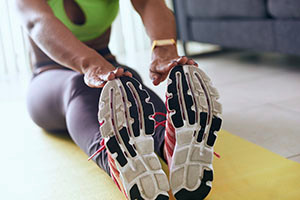 Research has indicated that a staggering sixty percent of people who enjoy running have endured a running injury in the past year. These injuries may be the result of inconsistent training and possibly from increasing speed and distance too soon. An acute running injury is generally traumatic and happens suddenly. Now you're probably wondering what an acute running injury is. Most commonly they are strains and sprains, but can also be a muscle tear, bone crack, or ligament snap. Other running injuries may include plantar fascitiis, heel spurs, stress fractures, ankle sprains, and Achilles tendonitis. Whether a runner falls, twists an ankle, or gets struck by a vehicle, it's usually painful and associated with a "popping" sound followed by inflammation. Additionally, the foot may have a limited range of motion, and it may be difficult to walk. Runners may be able to prevent these injuries by paying attention to the type of ground they’re running on, being aware of their surroundings, and stretching before and after a run. There are many painful foot conditions that can occur from running injuries, and it is strongly suggested that you consult with a podiatrist who can provide helpful suggestions on how to prevent running injuries.
Research has indicated that a staggering sixty percent of people who enjoy running have endured a running injury in the past year. These injuries may be the result of inconsistent training and possibly from increasing speed and distance too soon. An acute running injury is generally traumatic and happens suddenly. Now you're probably wondering what an acute running injury is. Most commonly they are strains and sprains, but can also be a muscle tear, bone crack, or ligament snap. Other running injuries may include plantar fascitiis, heel spurs, stress fractures, ankle sprains, and Achilles tendonitis. Whether a runner falls, twists an ankle, or gets struck by a vehicle, it's usually painful and associated with a "popping" sound followed by inflammation. Additionally, the foot may have a limited range of motion, and it may be difficult to walk. Runners may be able to prevent these injuries by paying attention to the type of ground they’re running on, being aware of their surroundings, and stretching before and after a run. There are many painful foot conditions that can occur from running injuries, and it is strongly suggested that you consult with a podiatrist who can provide helpful suggestions on how to prevent running injuries.
Exercising your feet regularly with the proper foot wear is a great way to prevent injuries. If you have any concerns about your feet, contact Edwin Oghoorian, DPM of Pacific Foot & Ankle Associates . Our doctor will treat your foot and ankle needs.
How to Prevent Running Injuries
Many common running injuries are caused by overuse and overtraining. When the back of the kneecap starts wearing out and starts causing pain in your knee, this is commonly referred to as runner’s knee. Runner’s knee is a decrease in strength in your quadriceps and can occur if you’re not wearing properly fitted or supporting shoes. To prevent runner’s knee, focusing on hip strengthening is a good idea, as well as strengthening your quads to keep the kneecaps aligned.
What Are Some Causes of Running Injuries?
- One cause of a common running injury is called iliotibial band syndrome.
- Plantar fasciitis is also another common injury.
- Stress fractures can occur from overtraining, lack of calcium, or even your running style.
Best Ways to Prevent Running Injuries
- Wear footwear that fits properly and suits your running needs.
- Running shoes are the only protective gear that runners have to safeguard them from injury.
- Make a training schedule. Adding strengthening exercises as well as regular stretching can help keep you strong and limber and can lessen the possibility of injuries.
- Stretching keeps muscles limber; this will help you gain better flexibility.
If you have any questions please feel free to contact our office located in San Dimas, CA . We offer the newest diagnostic and treatment technologies for all your foot and ankle needs.
Read more about How to Prevent Running InjuriesWhat Causes Heel Pain?
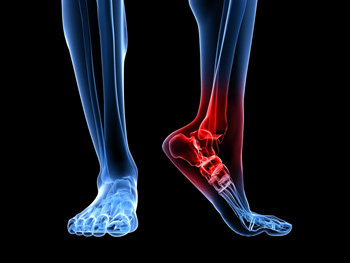 Heel pain can have a variety of causes that range from bone damage like a bone bruise or stress fracture, to structural issues like plantar fasciitis or Achilles tendonitis. Plantar fasciitis is the most common cause of heel pain, and this occurs when the plantar fascia, which connects the heel to the toes along the bottom of the foot, becomes inflamed or torn. Children who are experiencing heel pain may be suffering from Sever’s disease. Sever’s disease occurs in active teenagers when the growth plate in the heel becomes inflamed. Patients who are struggling with heel pain should consult with a podiatrist for diagnosis. Upon diagnosis, a proper treatment method will be provided by your podiatrist.
Heel pain can have a variety of causes that range from bone damage like a bone bruise or stress fracture, to structural issues like plantar fasciitis or Achilles tendonitis. Plantar fasciitis is the most common cause of heel pain, and this occurs when the plantar fascia, which connects the heel to the toes along the bottom of the foot, becomes inflamed or torn. Children who are experiencing heel pain may be suffering from Sever’s disease. Sever’s disease occurs in active teenagers when the growth plate in the heel becomes inflamed. Patients who are struggling with heel pain should consult with a podiatrist for diagnosis. Upon diagnosis, a proper treatment method will be provided by your podiatrist.
Many people suffer from bouts of heel pain. For more information, contact Edwin Oghoorian, DPM of Pacific Foot & Ankle Associates . Our doctor can provide the care you need to keep you pain-free and on your feet.
Causes of Heel Pain
Heel pain is often associated with plantar fasciitis. The plantar fascia is a band of tissues that extends along the bottom of the foot. A rip or tear in this ligament can cause inflammation of the tissue.
Achilles tendonitis is another cause of heel pain. Inflammation of the Achilles tendon will cause pain from fractures and muscle tearing. Lack of flexibility is also another symptom.
Heel spurs are another cause of pain. When the tissues of the plantar fascia undergo a great deal of stress, it can lead to ligament separation from the heel bone, causing heel spurs.
Why Might Heel Pain Occur?
- Wearing ill-fitting shoes
- Wearing non-supportive shoes
- Weight change
- Excessive running
Treatments
Heel pain should be treated as soon as possible for immediate results. Keeping your feet in a stress-free environment will help. If you suffer from Achilles tendonitis or plantar fasciitis, applying ice will reduce the swelling. Stretching before an exercise like running will help the muscles. Using all these tips will help make heel pain a condition of the past.
If you have any questions please contact our office located in San Dimas, CA . We offer the newest diagnostic and treatment technologies for all your foot and ankle needs.
Read more about Heel Pain
